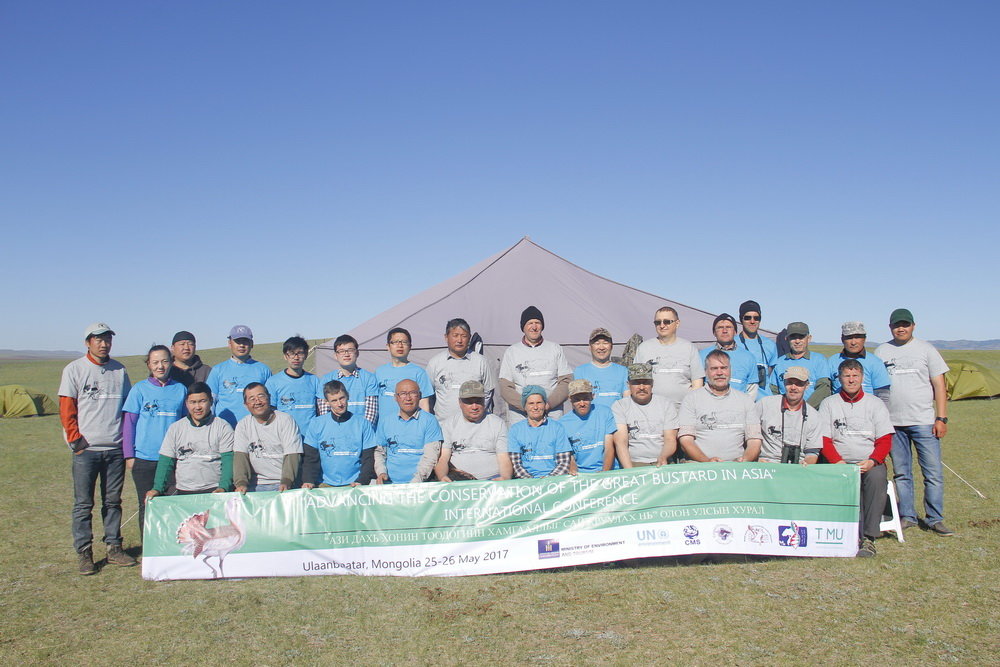The Asian Great Bustard
The Asian Great Bustard is an iconic species of the Eurasian steppe and is in danger of disappearing. We estimate that only 1500 individuals remain. This population continues to decline due to poaching (all hunting is illegal and unsustainable), fatal collisions with power lines, poisoning of birds on the migratory pathway, destruction of eggs and chicks by agricultural machinery, and use of pesticides.
Mongolia is the stronghold for the breeding of the Eastern Great Bustard. In recognition of Mongolia’s important role in the conservation of this bird, in 2014 the Mongolian Ministry of Environment and Tourism collaborated with the Wildlife Science and Conservation Center, and Eurasian Bustard Alliance, to lead an initiative to increase protection for this species under the Convention on Migratory Species Appendix I. This proposal was unanimously accepted by the signatories of the Convention, and these birds are now protected globally at the highest level.

The Asian Great Bustard is one of the world’s heaviest birds capable of flight. Males are much larger than females; in fact, this bird displays the largest sexual size dimorphism among birds. Their long-distance migrations and rapid growth of young birds in the steppe are adaptations to the harsh continental climate. These large birds also perform spectacular breeding displays each spring, in which males compete for female attention at traditional gathering sites. Protecting these display sites is key to maintaining healthy breeding populations. Tracking data finds that these birds cover large distances and use large territories over the course of the year. This is challenging for their conservation, but makes them excellent ambassadors for landscape-level grassland conservation and sustainable agriculture.
We partner with the Eurasian Bustard Alliance to work towards the conservation of Eastern Great Bustards. We aim to expand scientific knowledge about poorly understood populations, and emphasize engaging local people in conservation. We also promote awareness of the species and advance conservation policy.

In 2017, we worked with the Mongolian Ministry of Environment and Tourism to organize the first international conference on Great Bustards in Asia, which brought together experts from nine countries to discuss conservation action. This conference was supported by the Mongolian Government and the CMS Secretariat, and funding was provided by the Trust for Mutual Understanding.
The Proposal for a Concerted Action for the Asian Great Bustard was developed and promoted by the Eurasian Bustard Alliance and Wildlife Science and Conservation Center of Mongolia after satellite tracking research revealed the highly migratory behavior of the great bustard in Asia. International cooperation will be key to conservation of these populations of great bustard, which experience threats including poaching, poisoning, and collisions with power lines along their migratory journey.
Additional information:
- Eurasian Bustard Alliance, click here
- CMS news: Global Experts Fly In To Save Asia’s Biggest Bird, click here
- National Geographic: “Governments unite to conserve the world’s heaviest flying animal, click here
- Kessler et al. 2013. Satellite telemetry reveals long‐distance migration in the Asian great bustard Otis tarda dybowskii. Journal of Avian Biology, 44: 311-320, click here
- Kessler et al. 2018. Mitochondrial Divergence between Western and Eastern Great Bustards: Implications for Conservation and Species Status. Journal of Heredity 641–652, click here
